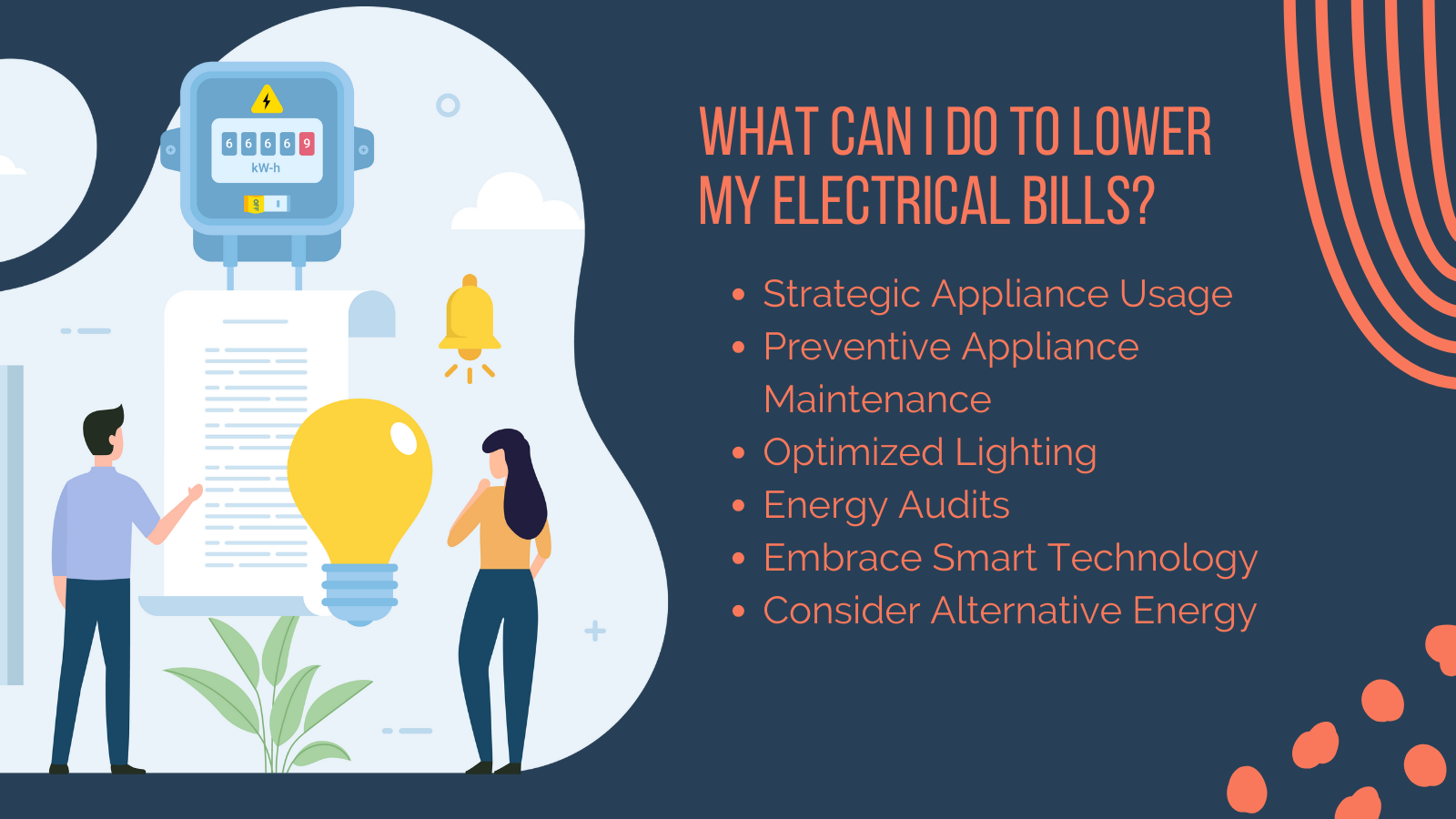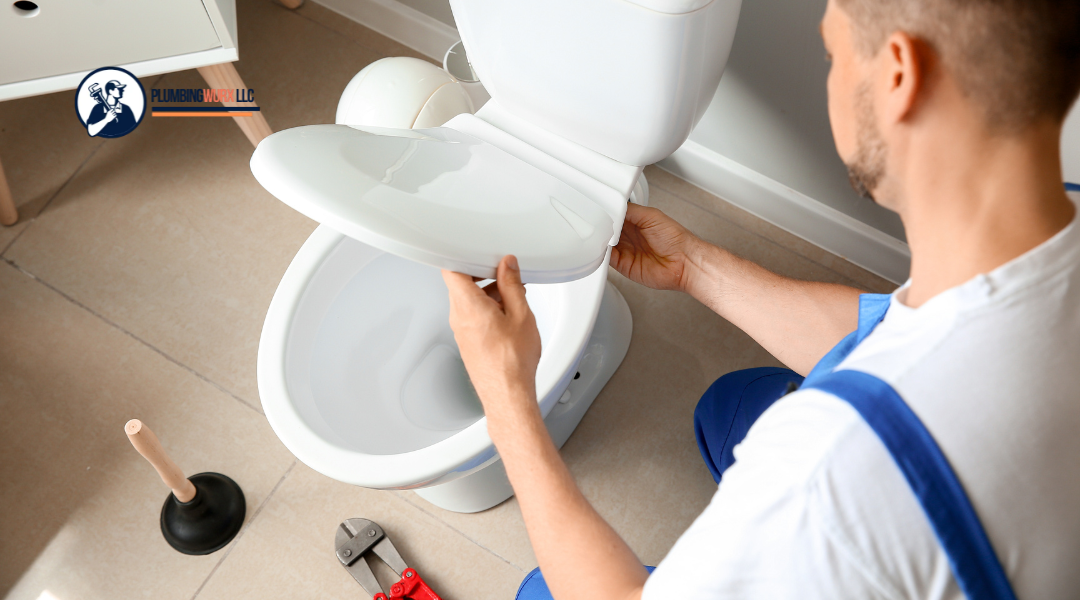You’ve been mindful all month—turning off lights and unplugging unused devices.
Yet, as you tear open your electric bill, your eyebrows involuntarily arch upwards. The numbers stare back, defiantly high, despite your conscientious efforts.
Despite cautious usage, the enigma of a ballooning electric bill is a perplexing and universally shared woe.
It nudges us to ponder what factors are silently, yet persistently, inflating our monthly expenses.
Amid our careful conservation, where are we unwittingly leaking precious watts and bucks?
What’s Driving Up My Electric Bills?
An elevated electric bill is often a symphony of unnoticed, energy-draining activities.
While many pin the blame solely on excessive usage, we’ve discerned other elusive culprits in our extensive experience as specialist electricians.
Is My Home Energy-Efficient?
An energy-efficient home isn’t merely defined by LED bulbs and smart thermostats. The electrical integrity of your home plays a pivotal role in ensuring energy efficacy.
A lesser-known factor affecting efficiency is the quality and layout of your internal wiring. Aging or improperly installed wiring leads to higher resistance, compelling your system to draw more power to function effectively—a subtle yet significant drain on energy.
The type of insulation utilized in your home and even the placement of your electrical outlets influence heat retention and overall energy consumption, details often overlooked in standard energy audits.
Could My Appliances Be the Culprit?
While high-powered appliances contribute to energy usage, their efficiency levels are crucial in determining your electric bills.
Phantom load—the energy appliances consume when switched off but still plugged in—is a silent perpetrator, incrementally and unnecessarily boosting your bills.
The internal condition of your appliances, a sphere where our plumbing and electrical expertise often intertwines, silently sways your energy consumption.
For instance, a refrigerator with a malfunctioning seal or a water heater accumulating sediment over time will work harder, devouring more electricity to deliver expected performances.
Am I Using Electricity During Peak Hours?
It might be surprising to discover that the ‘when’ of electricity usage can be just as impactful as the ‘how much.’
Many regions operate on a time-of-use rate system, where the cost of electricity fluctuates throughout the day, peaking during high-demand hours, typically in the late afternoon and evening.
Using high-energy appliances like washers, dryers, and ovens during these peak periods can notably inflate your bills, a nuance that often escapes the conventional energy-saving dialogue.
Leveraging off-peak hours for significant electrical usage, a strategy known as load shifting, can yield a palpable impact on your monthly outgoings, providing the same utility at a fraction of the cost.
How Do External Factors Affect My Electric Bills?
Often, we meticulously scrutinize the internal workings of our homes, neglecting to account for the impactful sway of external elements on our electric bills:
- Extreme hot and cold temperatures inherently demand more from our heating and cooling systems.
- Regional energy prices fluctuate due to the availability of resources, regulatory changes, and market dynamics.
- Sometimes, an abrupt rise in your electric bill might be tethered to a hike in local energy rates, independent of your personal usage.
- The infrastructure delivering power to your residence—power lines, transformers, etc.—can inadvertently introduce inefficiencies into the system, fractionally escalating your power consumption if not maintained or upgraded by your utility provider.
6 Steps to Lower Your Electric Bills
Gaining control over your electric bills can be done without compromising comfort or convenience.
Here are 6 actionable steps sculpted from our specialized knowledge in electrical and plumbing services:
- Strategic Appliance Usage: Align your use of high-power appliances like washing machines and dryers with off-peak hours to lower costs without curbing your utility.
- Preventive Appliance Maintenance: Periodic servicing, focusing on air conditioner filters, water heater elements, and refrigerator coils, will enhance efficiency and preclude unnecessary energy drains.
- Optimized Lighting: Switching to LED or energy-efficient lighting is foundational. Consider integrating motion sensors or timers to ensure lights are only active when necessary.
- Energy Audits: At PlumbingWurx, we provide a thorough energy audit. Our specialized eyes uncover hidden leaks and inefficiencies in electrical and plumbing systems, which, when rectified, significantly deflate your bills.
- Embrace Smart Technology: Smart thermostats and appliances, which adapt to your usage patterns and autonomously optimize energy conservation, can be powerful allies in managing electrical usage without hassle.
- Consider Alternative Energy: Explore integrating alternative energy sources like solar panels to reduce dependency on grid power and offer a cleaner, cost-effective energy pathway in the long term.
By intertwining informed habits with strategic interventions, you can cultivate an environment where energy conservation is woven seamlessly into the fabric of daily living.
Small Changes Make a Big Difference!
Through our lens as adept electricians and plumbers, we bring to light the multifaceted and often unseen elements that silently, yet persistently, nudge your electric bills upwards.
Don’t let your electric bills become burdensome! Contact us today at (301) 264-7577 or visit us at 1101 Opal Ct, Hagerstown, MD 21740. We’re a family-owned business and pride ourselves on our top-notch expertise and customer service.
References
- “U.S. Energy Information Administration – EIA – Independent Statistics and Analysis.” Prices and Factors Affecting Prices – U.S. Energy Information Administration (EIA), www.eia.gov/energyexplained/electricity/prices-and-factors-affecting-prices.php. Accessed 4 Oct. 2023.












0 Comments